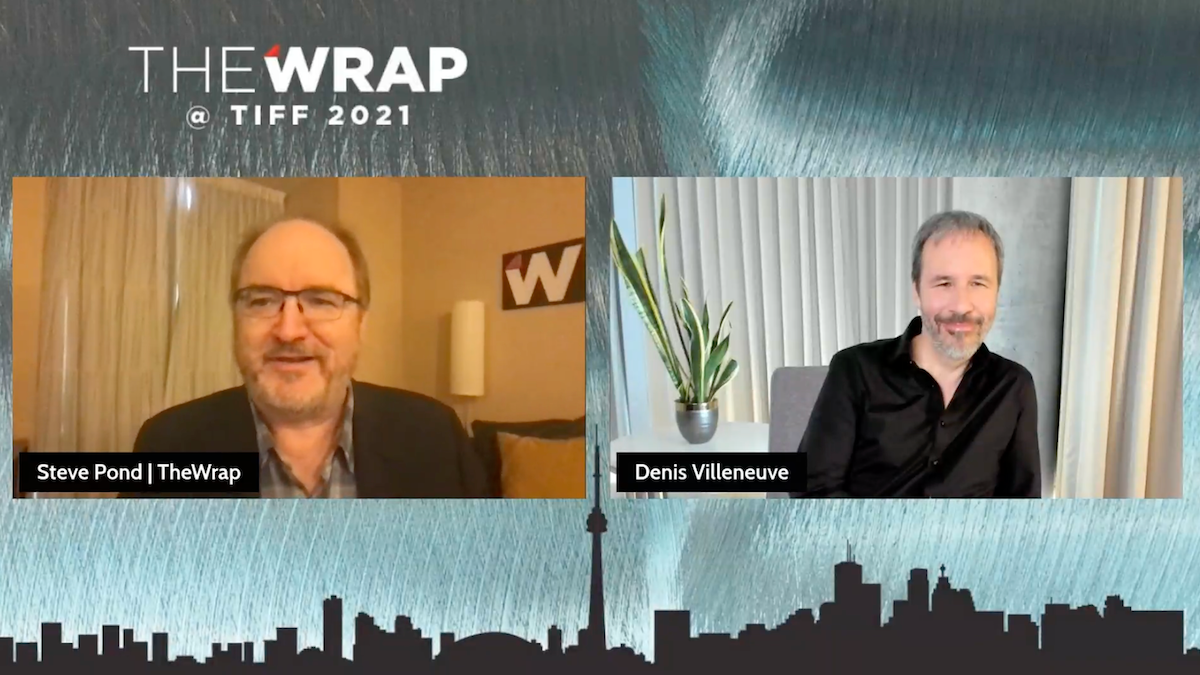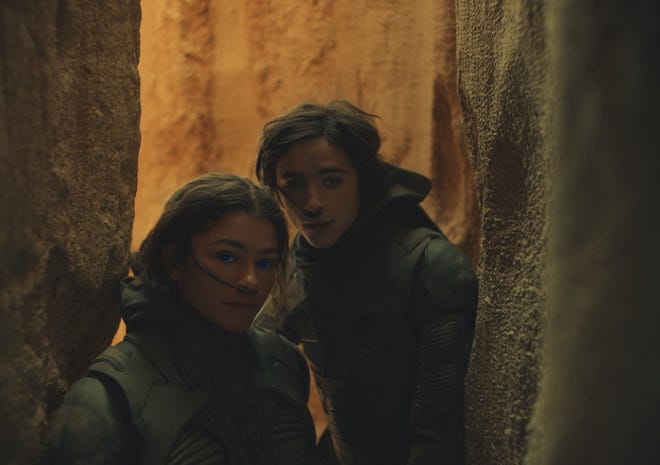‘Dune’ movie team details changes made in adapting the book
6 min read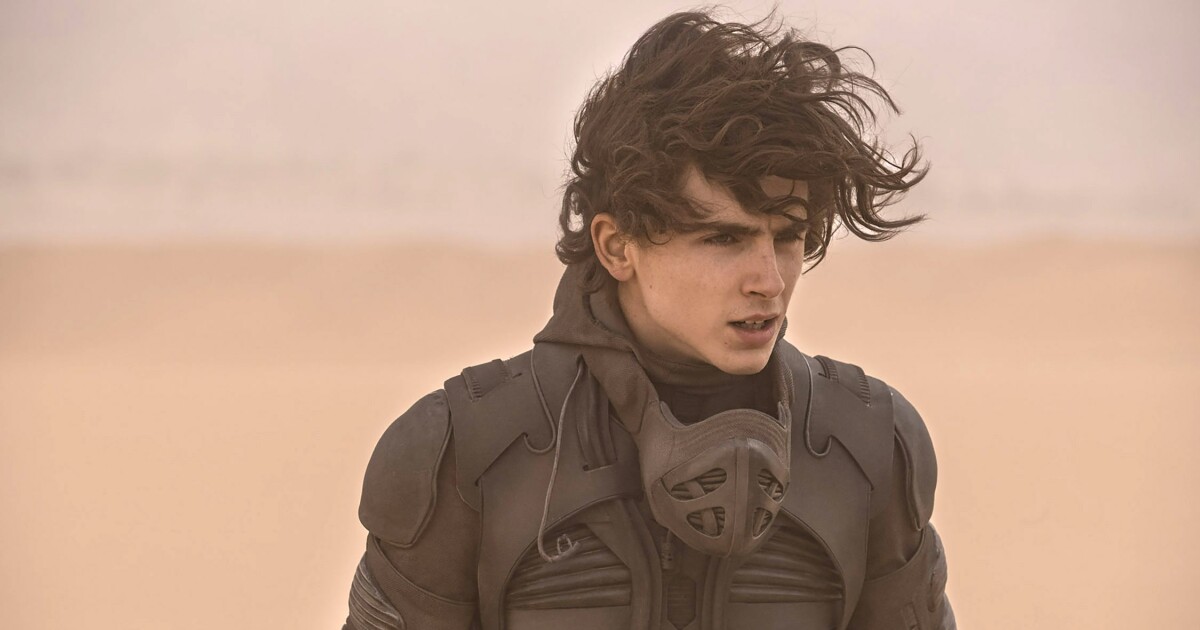
Table of Contents
Earlier this month, with the long-awaited release of Denis Villeneuve’s sci-fi epic “Dune” finally approaching, the film’s official Twitter account issued a challenge: “Explain ‘Dune’ in one sentence.”
Thousands of fans of Frank Herbert’s landmark 1965 novel responded, trying to distill the sweeping saga — set in the distant future on a desert planet where powerful clans battle for control over the most precious substance in the universe — down to a few words.
Some efforts were hopelessly vague (“A story about family on an epic scale”). Others were nerdily esoteric (“Subversion of the hero’s journey in the far future with psychedelic drugs and ninja nuns with an unhealthy interest in the gene pool”). More than a few were jokey (“Spice worms want to party but silly humans just want to make war.”)
The point was clear: “Dune” may be one of the most revered books in the sci-fi canon, with millions of fans around the world — not a few of whom have images and quotes from it tattooed on their bodies — but it is not the easiest book to explicate to the uninitiated. And that fact only raises the already sky-high stakes for Villeneuve’s $165-million production.
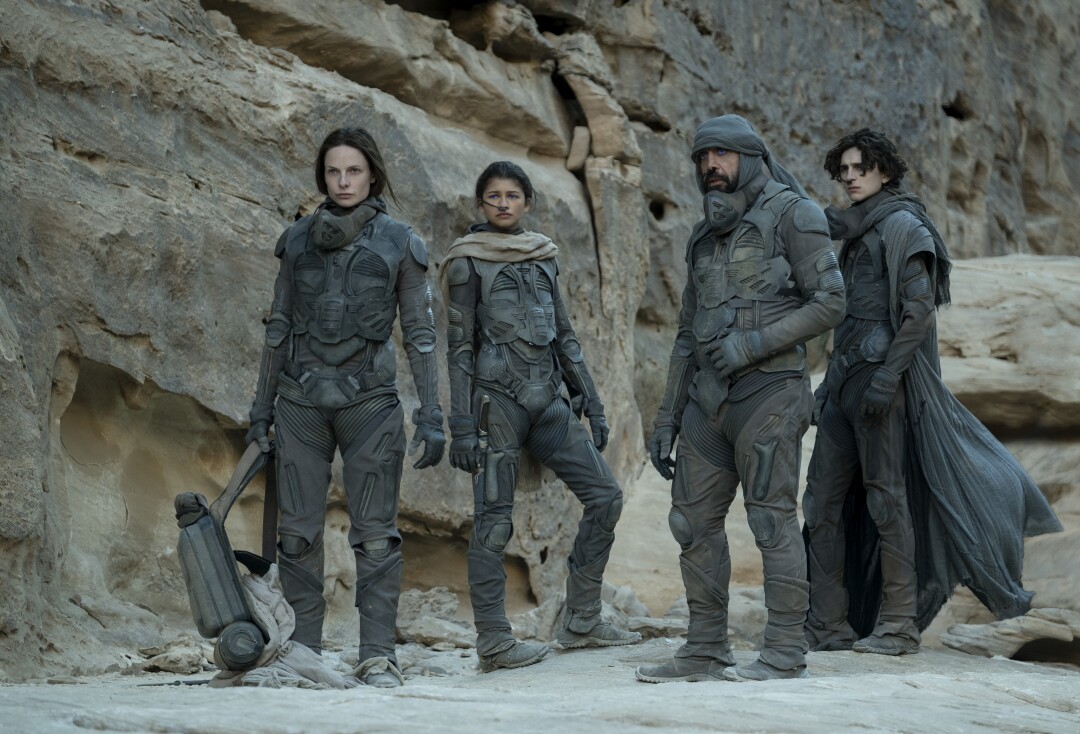
(l-r) Rebecca Ferguson as Lady Jessica Atreides, Zendaya as Chani, Javier Bardem as Stilgar, and Timothée Chalamet as Paul Atreides in ‘Dune.’
(Chiabella James / Warner Brothers)
Timothée Chalamet leads the cast of “Dune” as Paul Atreides, the son of a noble family who finds himself thrust into a deadly battle for dominion of the desolate planet Arrakis — and who may be the messianic leader that its oppressed people have long awaited. With a sprawling ensemble also including Rebecca Ferguson, Oscar Isaac, Josh Brolin, Javier Bardem, Jason Momoa, Stellan Skarsgard, Charlotte Rampling and Zendaya, “Dune” will world premiere at the Venice Film Festival next week. It then hits theaters and HBO Max on Oct. 22, having been pushed back nearly a year by Warner Bros. due to the COVID-19 pandemic.
Filmmakers have long been drawn to “Dune,” dreaming of turning Herbert’s action-packed yet philosophical novel into a more serious-minded, grown-up answer to “Star Wars.” (Believing “Star Wars” had borrowed heavily from his work, if not plagiarized it, Herbert once dismissed George Lucas’ film as “a comic book for the screen.”)
But the very same elements of Herbert’s novel that have entranced Hollywood — the vast scale, the heady themes of imperialism, religion, power and ecology, the most imaginative world-building this side of “The Lord of the Rings” — have also been the ones that have stymied efforts to adapt it for the screen.
Director David Lynch’s 1984 “Dune” was a troubled, critically lambasted production that bombed at the box office and has been disowned by Lynch himself. An earlier effort to adapt the book by cult filmmaker Alejandro Jodorowsky fizzled after years of development and millions of dollars in pre-production costs, a doomed endeavor chronicled in the 2013 documentary “Jodorowsky’s Dune.”
Having fallen in love with Herbert’s book as a teenager in Quebec, Canada, Villeneuve was unfazed by that bumpy history, even as he fully recognized the scale of the task.

Director Denis Villeneuve on the set of “Dune” with Rebecca Ferguson, who plays Lady Jessica.
(Chia Bella James/Warner Bros.)
“I knew the big challenge was to make sure that to enjoy the movie you don’t have to have read the book,” Villeneuve says. “But at the same time, for me, it was even more important that fans of the book will find all the elements and the poetry and the atmosphere that they loved about the book.”
Villeneuve’s last two films, 2016’s “Arrival” and 2017’s “Blade Runner 2049,” were each ambitious and technically daunting sci-fi movies. But as the first installment in a planned two-part epic, “Dune” is a gamble of another order of magnitude.
To help crack Herbert’s novel, Villeneuve partnered with screenwriters Eric Roth, whose credits include “Forrest Gump,” “Munich” and “A Star Is Born,” and Jon Spaihts, who has worked on films like “Prometheus” and “Doctor Strange.”
The Times spoke with the three collaborators about the principles that guided them as they took on what many consider to be the best sci-fi novel of all time.
Divide and conquer
Tackling “Dune” in the mid-1970s, Jodorowsky felt he’d need 10 to 14 hours of screen time to properly tell the story, crafting a script that Herbert later said was “the size of a phone book.” Lynch’s “Dune,” in turn, tried to pack the novel into a single film, resulting in what was widely deemed a confusing mess. (A three-part “Dune” miniseries that aired on what was then called the Sci Fi Channel in 2000 ran 4 1/2 hours in total.)
From the start, Villeneuve made clear that he would only take on “Dune” if he could break the book into two films. That approach made perfect sense to Legendary Entertainment, which had acquired the rights to Herbert’s work and saw the film as a way to launch a larger franchise that could leverage the novel’s numerous sequels and prequels.
“I didn’t have to fight for this idea,” Villeneuve says. “I just said to them, ‘Guys, the story is so rich, so complex, it takes all its strength from its details and its poetry. I truly think to do justice to the book, we should do it in two parts.’ And they immediately said yes.”
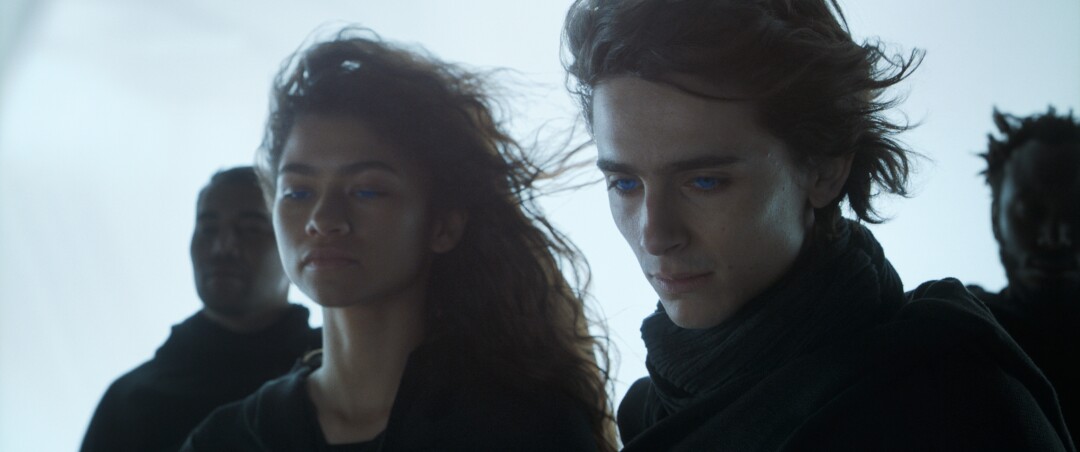
Zendaya as Chani and Timothée Chalamet as Paul Atreides in “Dune.”
(Warner Bros. Pictures/Legendary Pictures)
The challenge then was to figure out how to cleave a single work into two parts in a way that felt organic and narratively satisfying. “The storytelling kind of let us know where this movie should lead us to the next one,” Roth says. “One of the wonderful things about this movie is that you really feel there’s another journey ahead that could even be richer.”
Embrace the mystery
The universe of “Dune” operates by its own rules, which can at times be hard to wrap your head around.
The planet Arrakis is home to giant sandworms whose larvae produce a drug colloquially called “the spice” that extends life, provides superhuman cognitive abilities and makes interstellar travel possible. An ancient, secretive order of women called the Bene Gesserit attempt to steer humanity toward a higher plane of development through genetic experimentation and the use of their own mental powers — and believe that Paul may be the long-awaited messianic figure they call the Kwisatz Haderach.
“Frank Herbert created a uniquely rich culture in his futuristic world,” says Spaihts. “It’s a wild and woolly universe with deep mysticism, complex politics, different rivers of thought running through it. It would be very easy to take the source material and make a cerebral project that sort of wanders off into the philosophical bushes.”
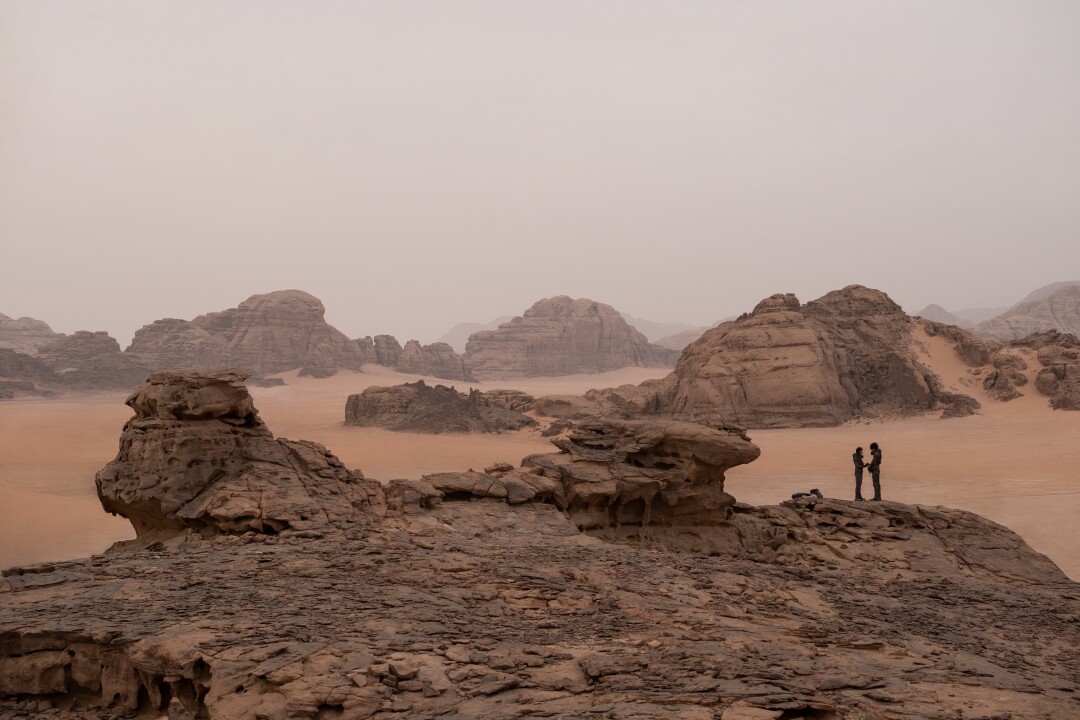
Many of the awe-inspiring visuals in “Dune” were captured with IMAX-certified cameras.
(Chia Bella James/Warner Bros.)
For Villeneuve, figuring out how to orient the audience in this strange universe was no easy feat. “The storyline is actually pretty simple but it’s more the density of the world and how rich and complex it is,” he says. “The big challenge was to try not to crush the audience at the start with an insane amount of exposition. It took a long time to find the right equilibrium.”
Even as he sought to ground Herbert’s story and make it comprehensible to newcomers, Villeneuve didn’t want to lose the more inexplicable qualities that had fired his own imagination at a young age.
“I love the unknown,” he says. “I love to feel vertigo, to feel that there’s a door that is not open for you, that you have to peek through. There’s a word in French that you don’t have in English, envoutant, which means being bewitched by mystery. It was very important for me that we not explain everything.”
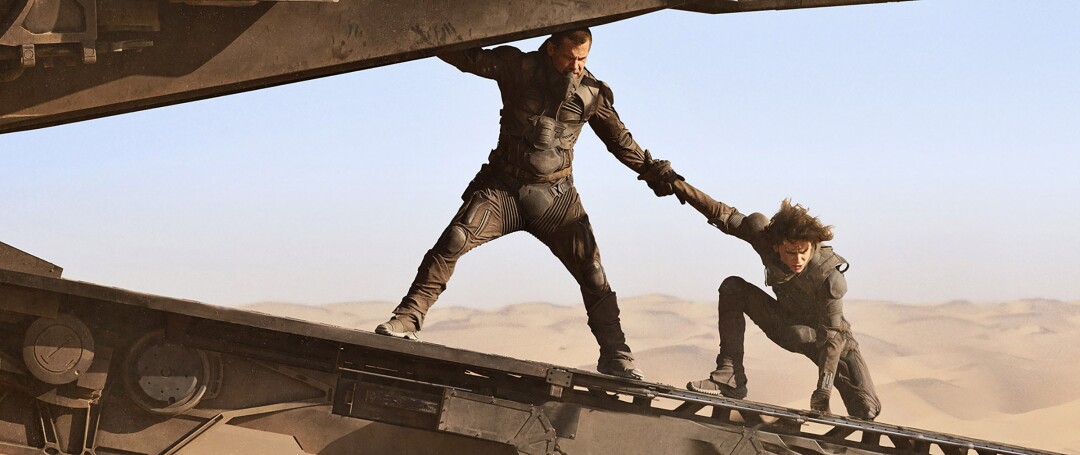
The action in “Dune” spans multiple planets, and the filming locations used to capture the varied looks included Hungary, Norway, Jordan and United Arab Emirates.
(Courtesy of Warner Bros Pictures/Courtesy of Warner Bros Pictures)
Accentuate the feminine
The audience for science fiction tends to skew male but with “Dune,” Villeneuve saw the opportunity to make a film with strong, fully rounded female characters, starting with Lady Jessica (Ferguson), the mother of Paul and a member of the Bene Gesserit.
“At the very beginning of the creative process, I remember Eric Roth asking me, ‘What is the most important element I should focus as I’m starting to write the first draft?’ I said, ‘Women,’ ” Villeneuve says. “There are so many things in the book that are so relevant and so prophetic but I felt that femininity should be up front. We needed to make sure that Lady Jessica is not an expensive extra.”
To further bring forward the book’s female characters, Villeneuve made the desert-dwelling warrior Chani, played by Zendaya, a significant presence in the film despite the fact that she doesn’t appear until the second half of Herbert’s novel.
“As the movie was evolving, Chani just kept growing and growing because I just was fascinated by Zendaya and her presence and how magnetic she was,” Villeneuve says. “ I shot more and more scenes with her. We improvised stuff. I was just so inspired by her.”
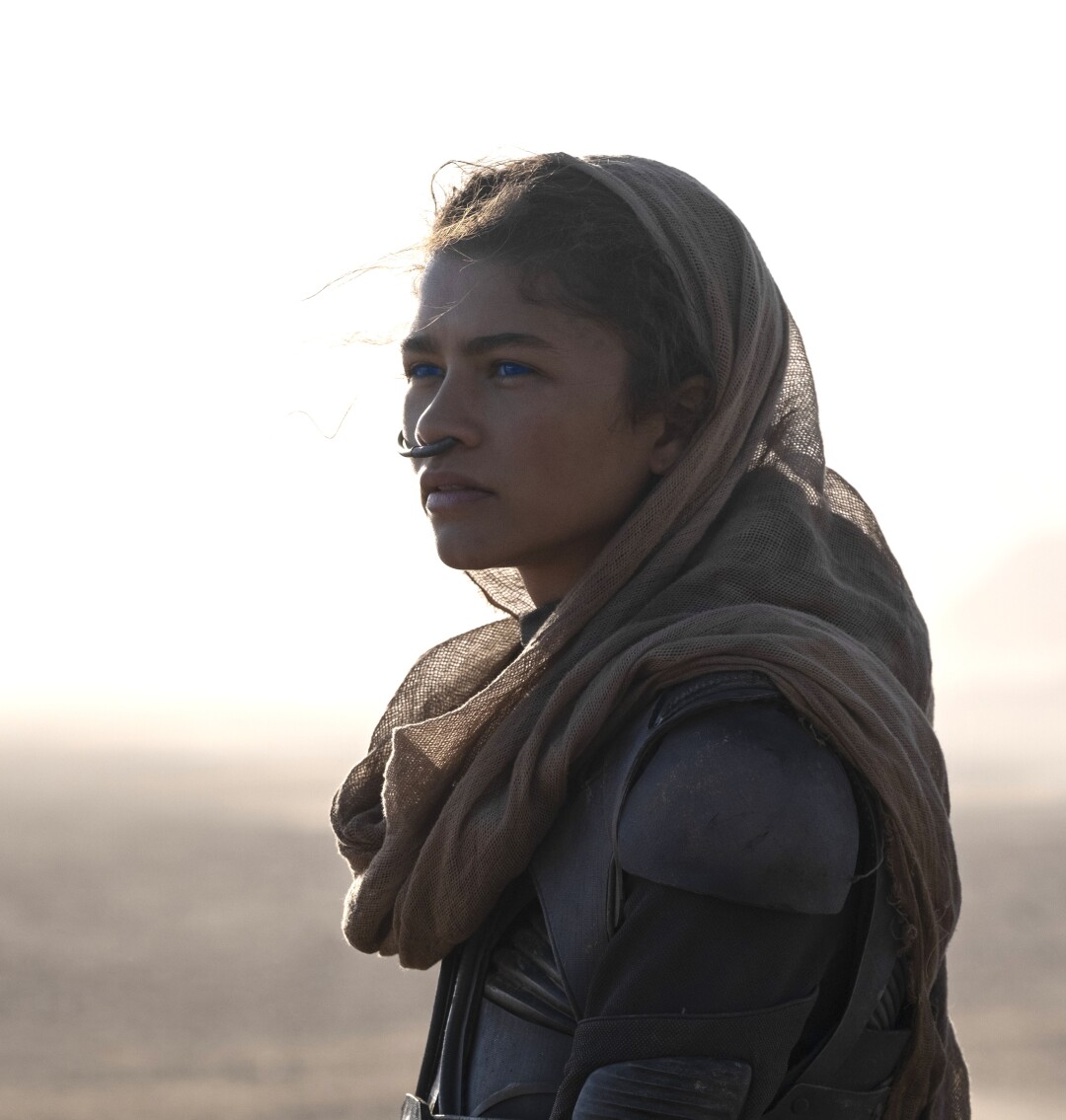
Zendaya as Chani in “Dune.”
(Chia Bella James/Warner Bros)
In one of the biggest departures from the novel, the film changes the gender of the character of Liet Kynes, a planetologist who has a deep understanding and love for Arrakis and its native people, the Fremen. In Herbert’s book, Kynes is a man but in the film she is a woman, played by British actress Sharon Duncan-Brewster.
The switch was suggested by Spaihts as a way to make the story feel more up to date.
“Herbert’s novel is, to some extent, an artifact of its time and it definitely skews male in ways that don’t feel completely contemporary now,” he says. “Of all the messages in the story, the message brought by Liet Kynes of planetary stewardship, of the preciousness of resources, of the necessity of building bridges to local communities to sustain ourselves going forward — those are modern messages, and it seemed right to modernize the messenger.”
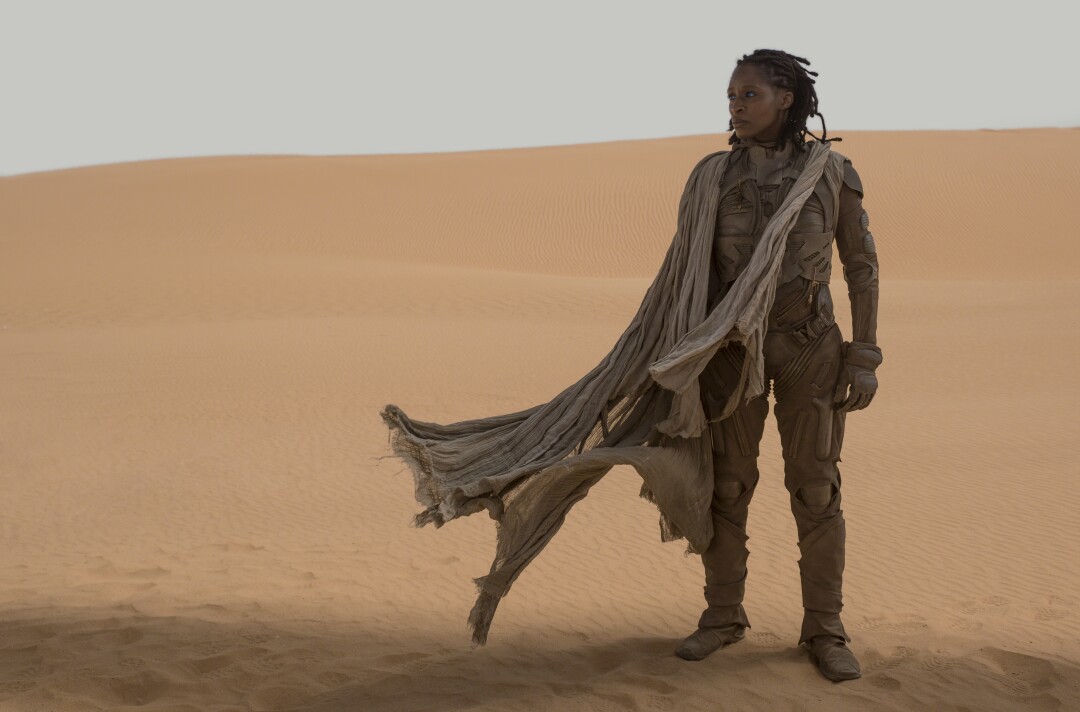
Sharon Duncan-Brewster as Dr. Liet Kynes in “Dune.”
(Chia Bella James/Warner Bros.)
Streamline judiciously
Even after splitting the book into two movies, there were still some elements that Villeneuve decided to pare back to avoid overloading the film with too many characters and subplots.
Memorably, if campily, played by Sting in Lynch’s movie, the character of Feyd-Rautha Harkonnen — the scheming nephew of the villainous Baron Vladimir Harkonnen (Skarsgard) — does not appear in Villeneuve’s “Dune.”
At the same time, the characters of Thufir Hawat (Stephen McKinley Henderson) and Piter De Vries (David Dastmalchian) — cognitively super-powered “mentats” who work for the Atreides and Harkonnen families, respectively — have less prominent roles in the film than they do in the novel.
“I gave Denis a very full script that was probably too long and a little too fanciful in some areas,” says Roth, who tackled the initial draft before Spaihts came on board. “He did what all good directors do: he edited it and also did his own writing to bring it down to size. You couldn’t have everything [in the book] — it would be an eight-hour movie. You have to tell what you consider the best parts of it, the most emotional and adventurous and curious — all the things that make it interesting.”
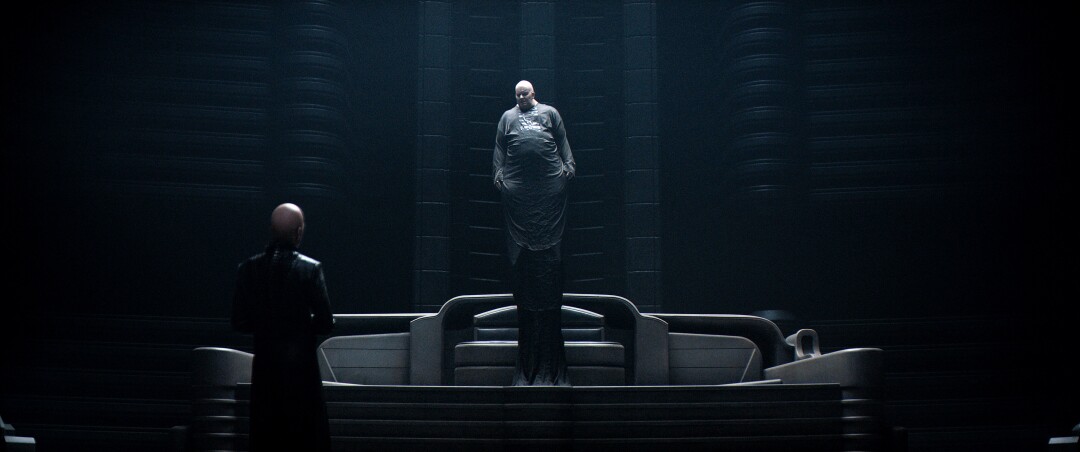
Stellan Skardgard as Baron Harkonnen in “Dune.”
(Warner Bros. Pictures and Legendary Pictures)
That said, while the second “Dune” film hasn’t officially been greenlit yet, Villeneuve says some things that may have been trimmed from this installment could show up in the next one.
”There are some elements that I went a bit fast on and some characters that are less developed that I’m keeping for the second one,” Villeneuve says. “We tried in this one to stay as close as possible to Paul’s experience. Then in the second one, I will have time to develop more some characters that were left aside a little bit. That is the theory. I hope it will work.”
When in doubt, return to the book
With so much on the line, it may have been tempting to try to turn “Dune” into a simpler and more easily marketable kind of spectacle, downplaying the more woo-woo spiritual aspects of the story in favor of slam-bang space battles in the hopes of selling more “Dune” toys come Christmas. But no one involved in the film wanted to stray far from Herbert’s vision.
Author Brian Herbert, who has co-written a number of “Dune” prequel novels with Kevin J. Anderson that expand upon the universe that his father created and who manages the Herbert literary estate along with other family members, served as an executive producer on the film and weighed in on the script while it was being developed.
“They’re very protective of their father and grandfather’s work,” Roth says of the Herbert family. “But everybody was so true to the book. Nobody was going to try to do something that flipped it on its head.” (Brian was unavailable to comment for this story but told an interviewer for the website Inverse last year that Villeneuve’s film “will forever be considered the definitive film adaptation” of his father’s novel.)
Asked if he ever reached out to either Jodorowsky or Lynch to get their hard-won insights on how — or, perhaps more importantly, how not — to wrangle “Dune” onto the screen, Villeneuve said he did not.
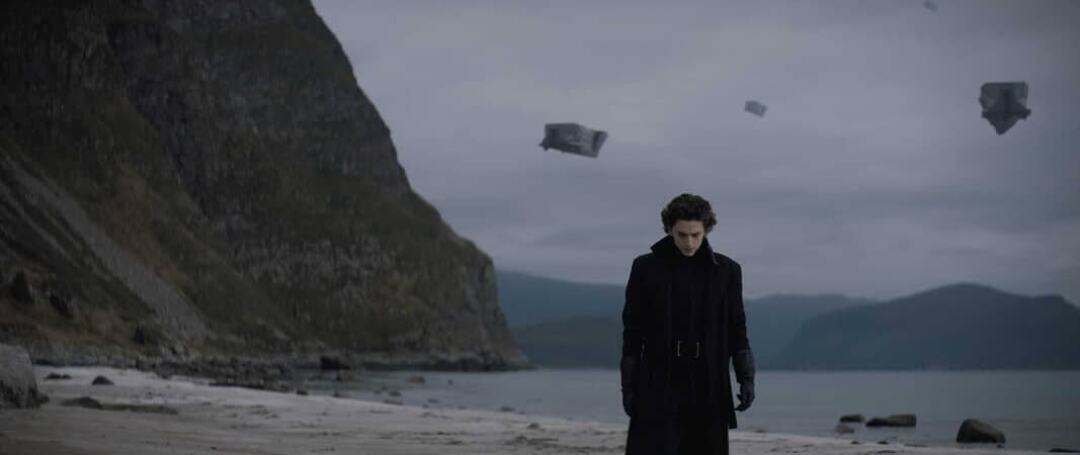
The “Dune” saga is expected to continue in a second film.
(Warner Bros.)
“I’m a big fan of both of them — these are two masters,” Villeneuve says. “I will say, I think if Jodorowsky had made his movie, it would have been an insanely fantastic movie. Would it have been the best ‘Dune’ adaptation? I don’t know.
“The thing is, from the start, I didn’t talk about Jodorowsky’s ideas or David Lynch’s ideas. What I said to the studio and my crew was to start from scratch and go back to that, the essence of the book. The book was the bible. I kept saying to my crew, ‘I want the people who love the book to feel that we put a camera in their mind as as they were reading.’ ”
window.fbAsyncInit = function() FB.init(
appId : '134435029966155',
xfbml : true, version : 'v2.9' ); ;
(function(d, s, id) var js, fjs = d.getElementsByTagName(s)[0]; if (d.getElementById(id)) return; js = d.createElement(s); js.id = id; js.src = "https://connect.facebook.net/en_US/sdk.js"; fjs.parentNode.insertBefore(js, fjs); (document, 'script', 'facebook-jssdk'));

